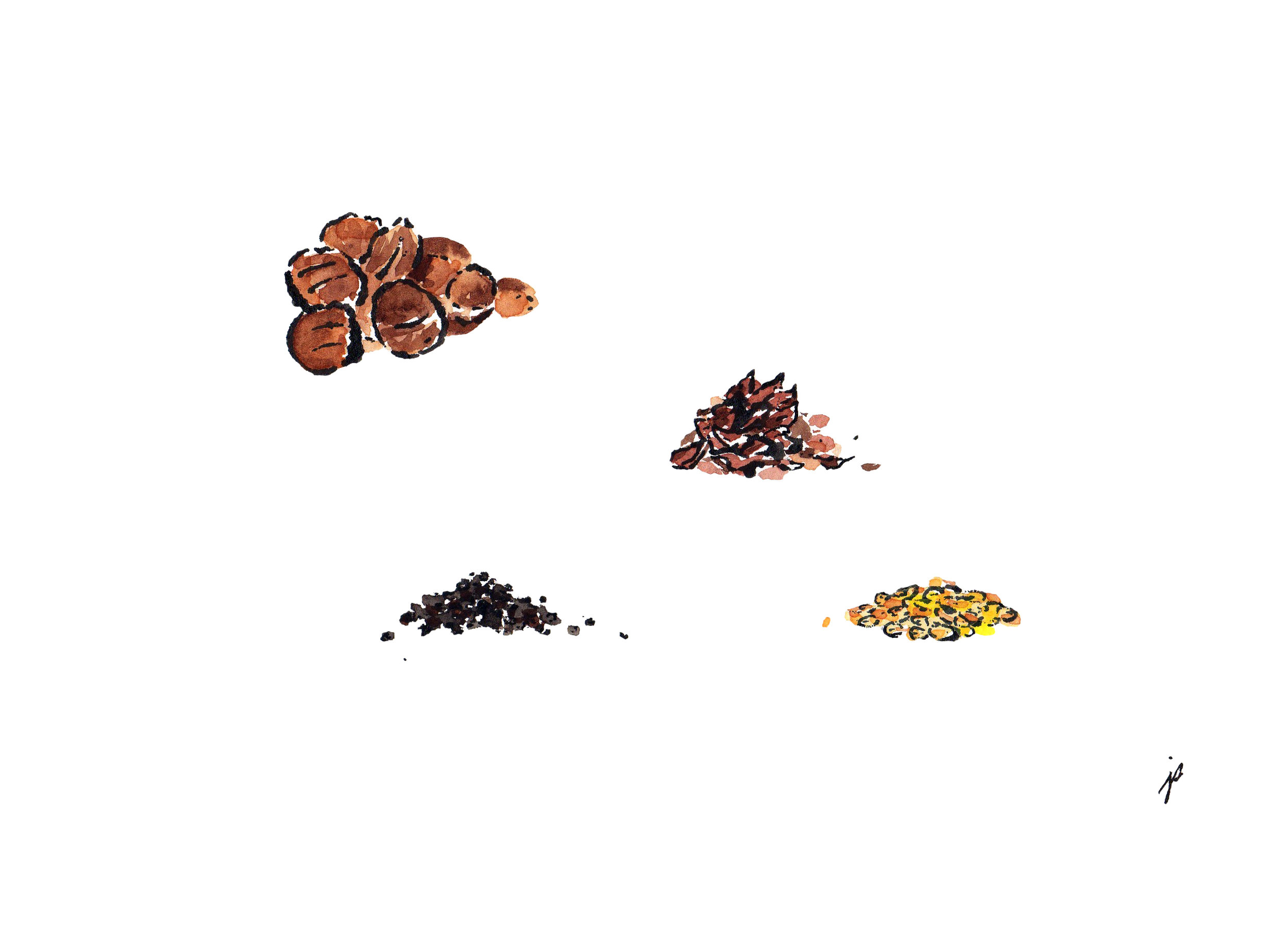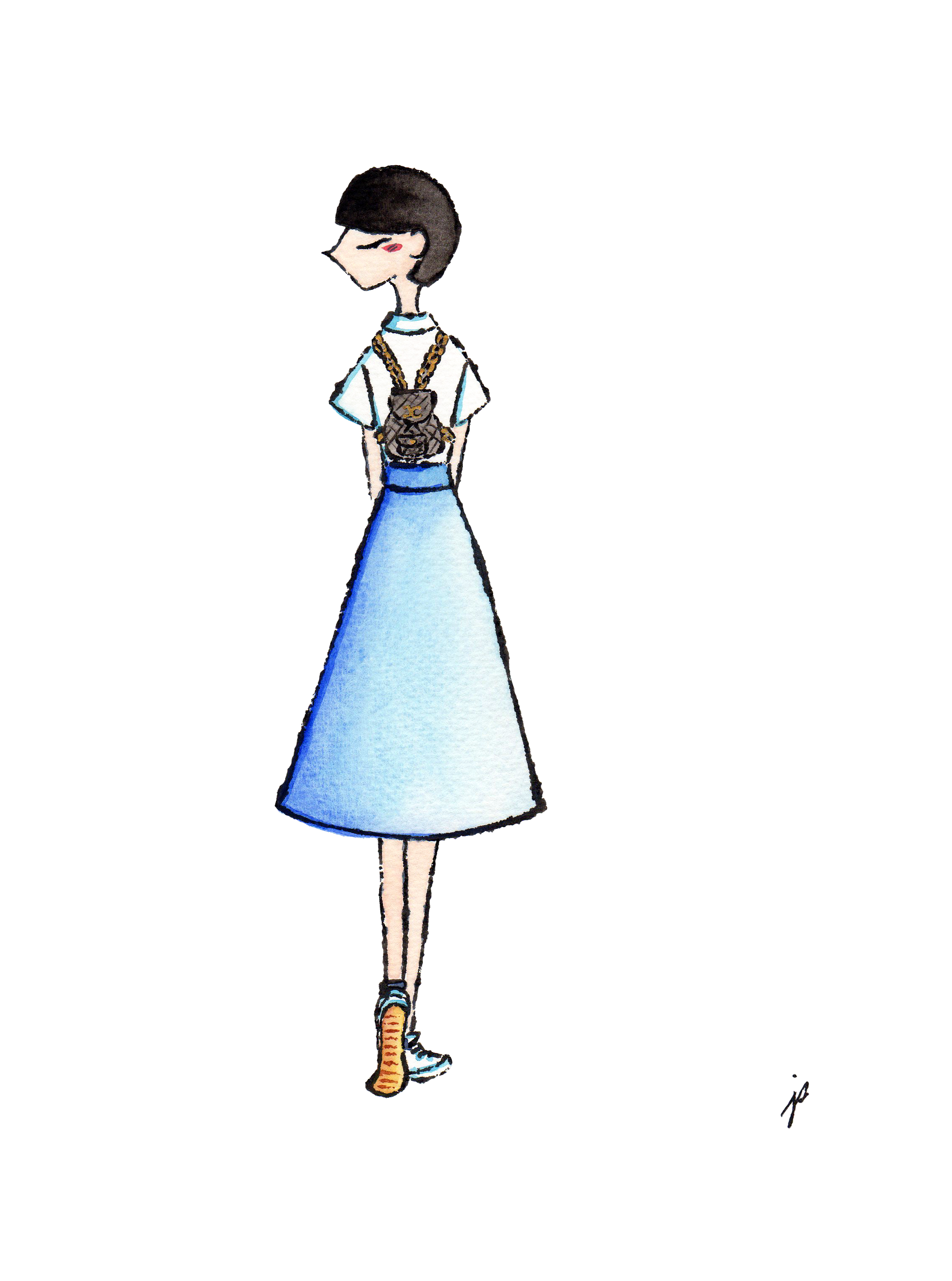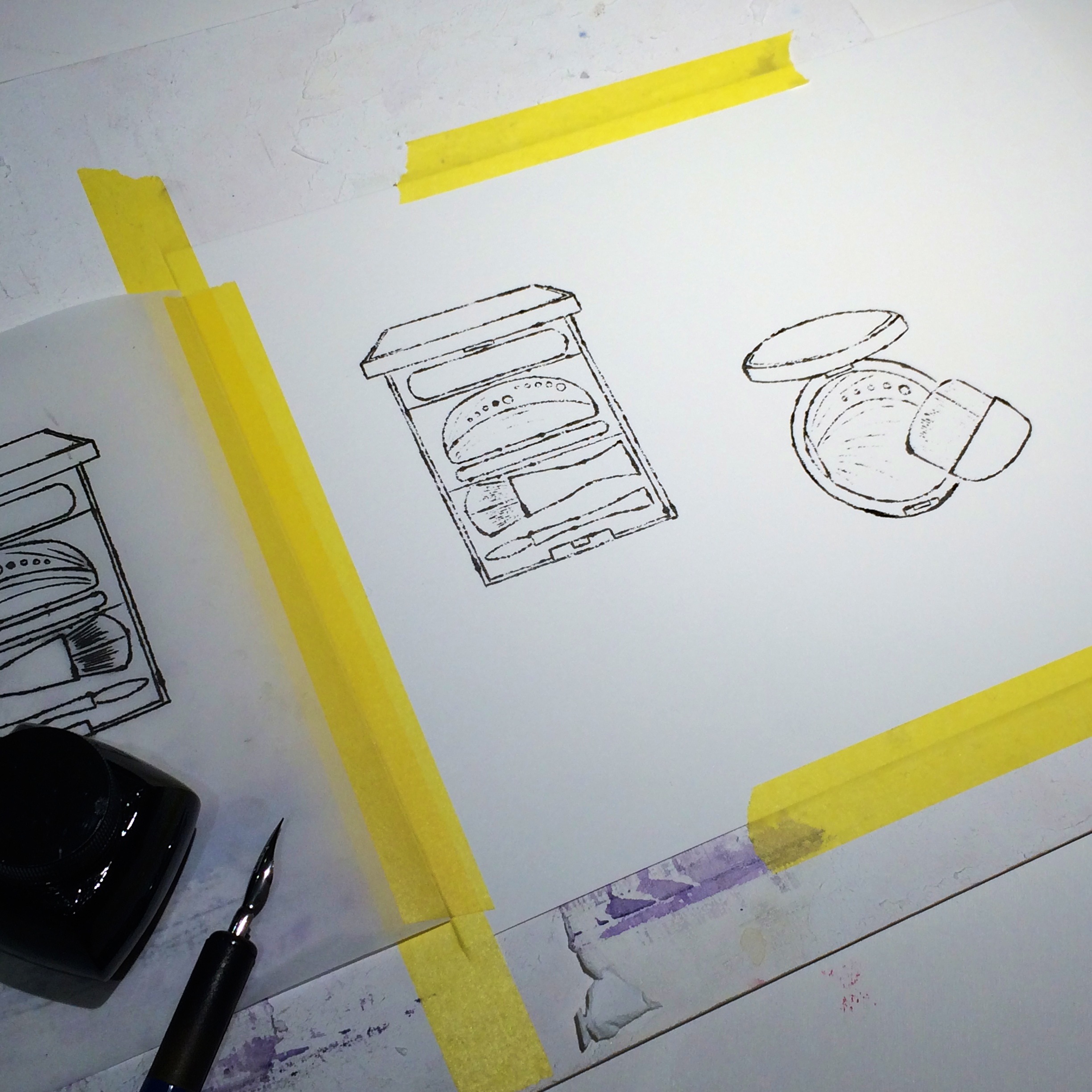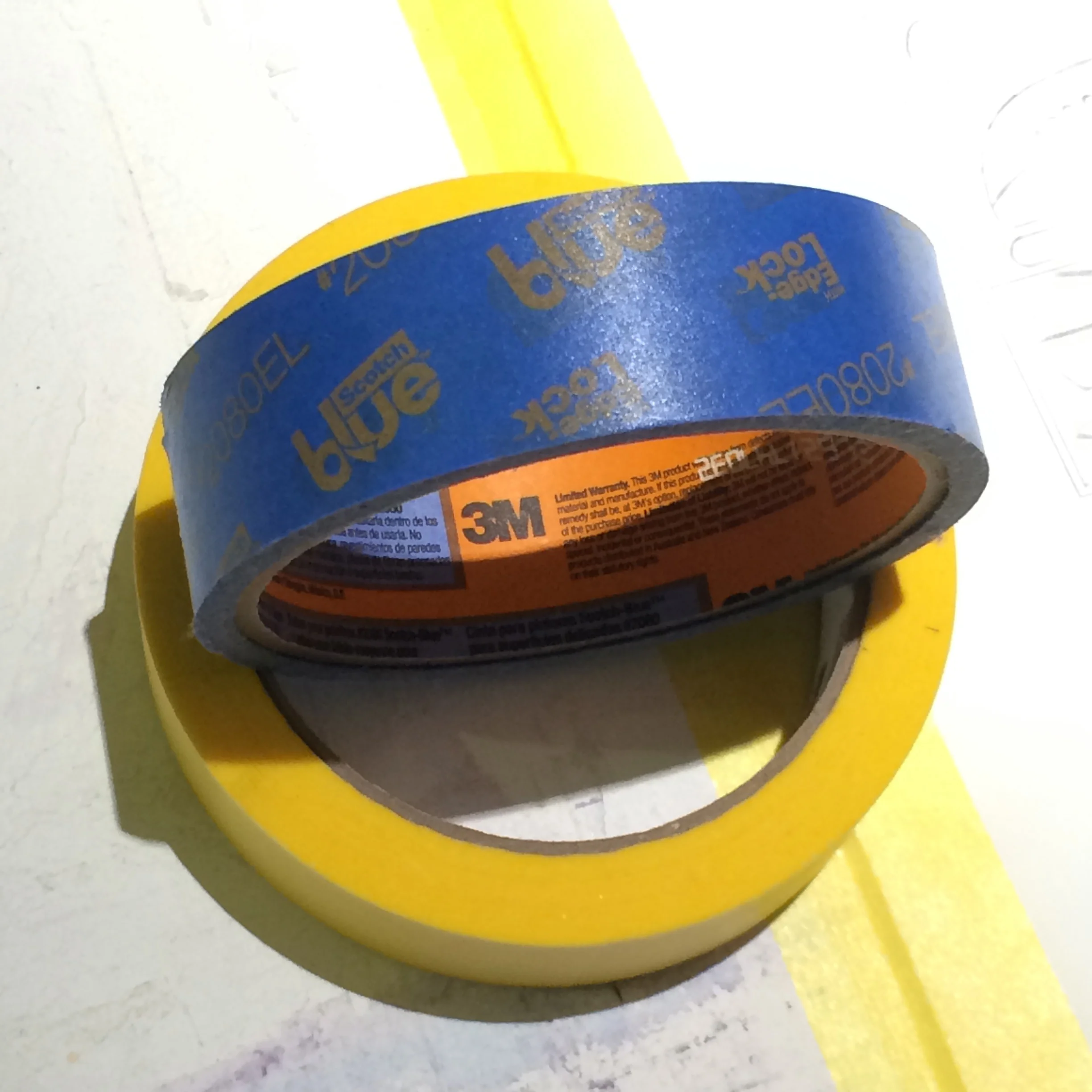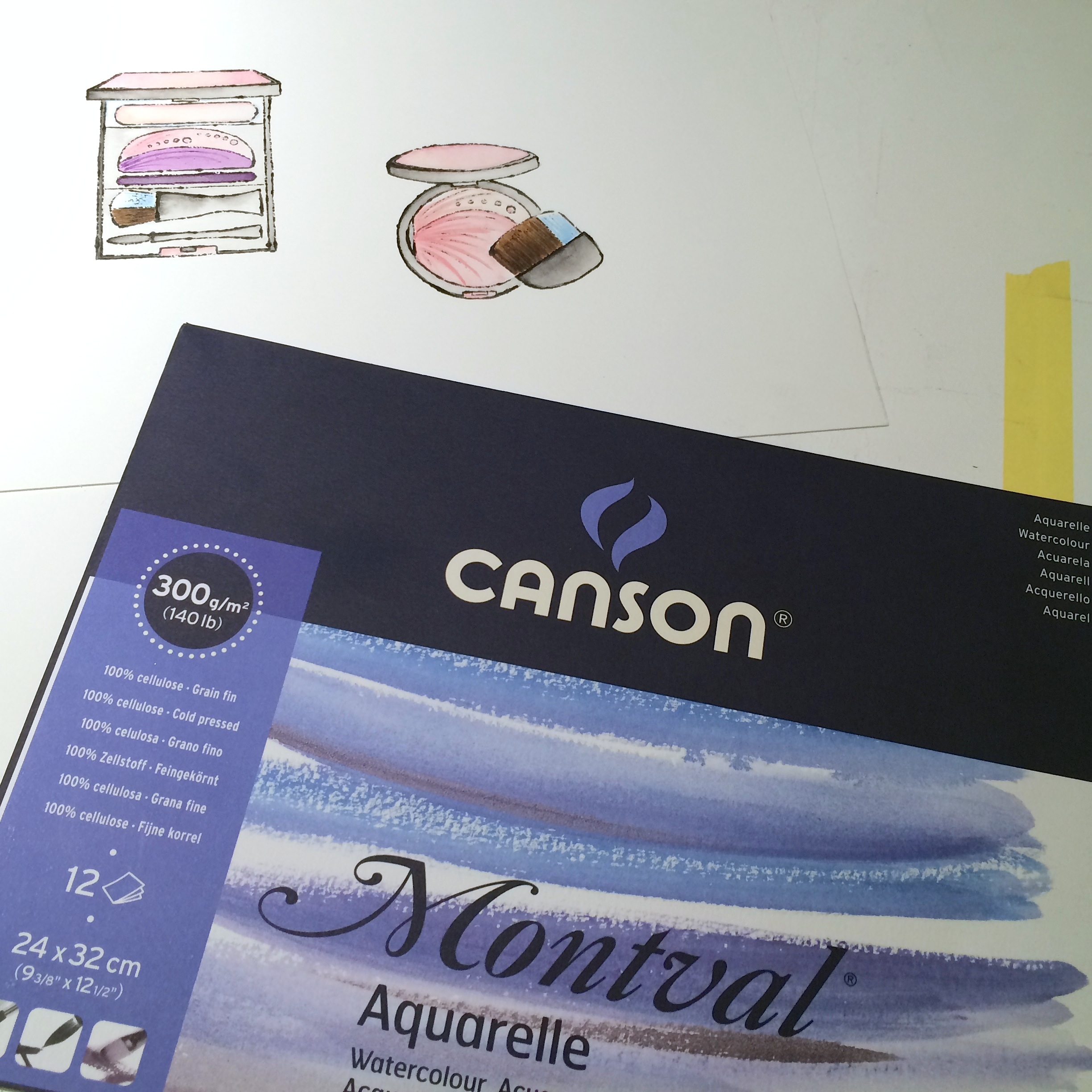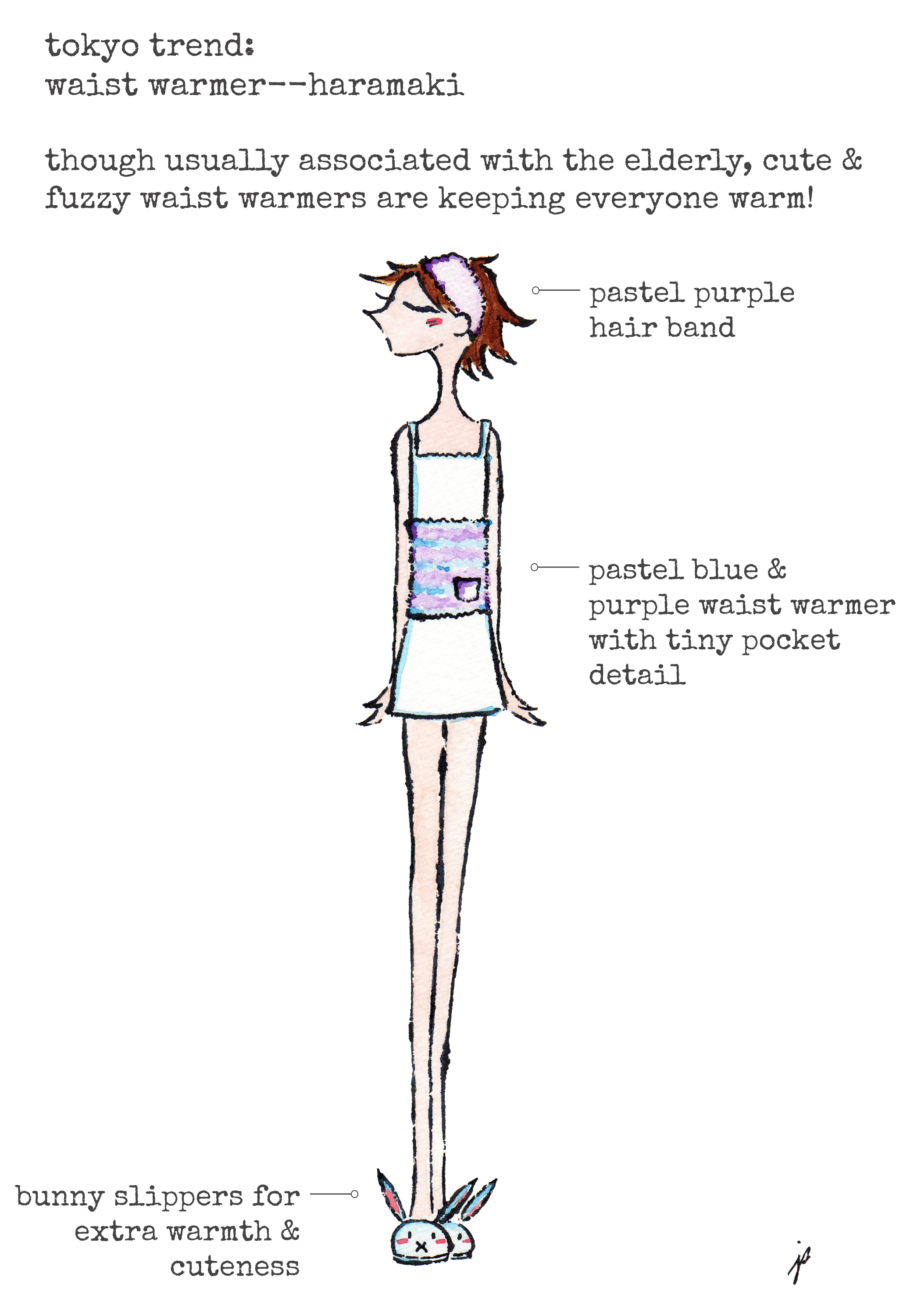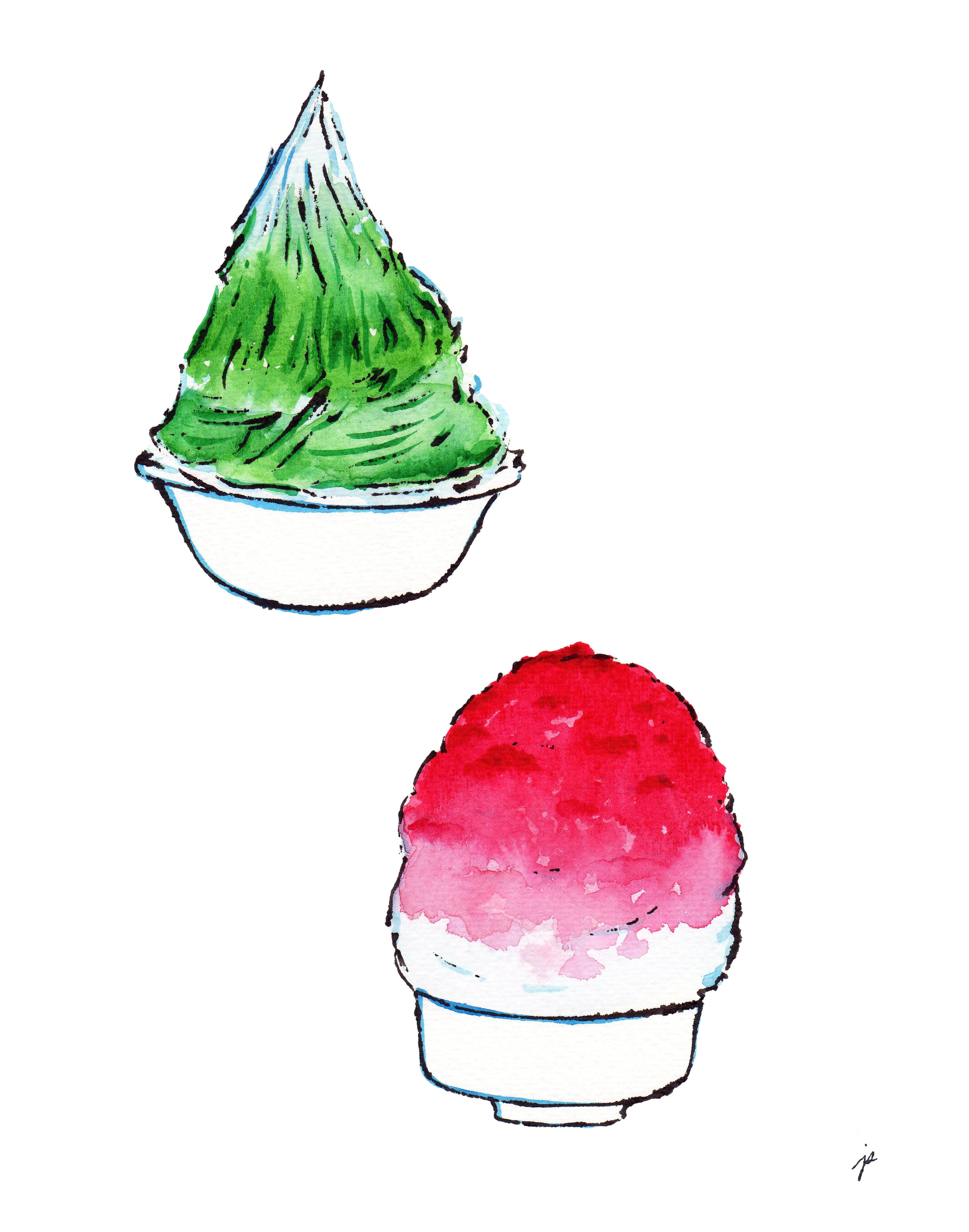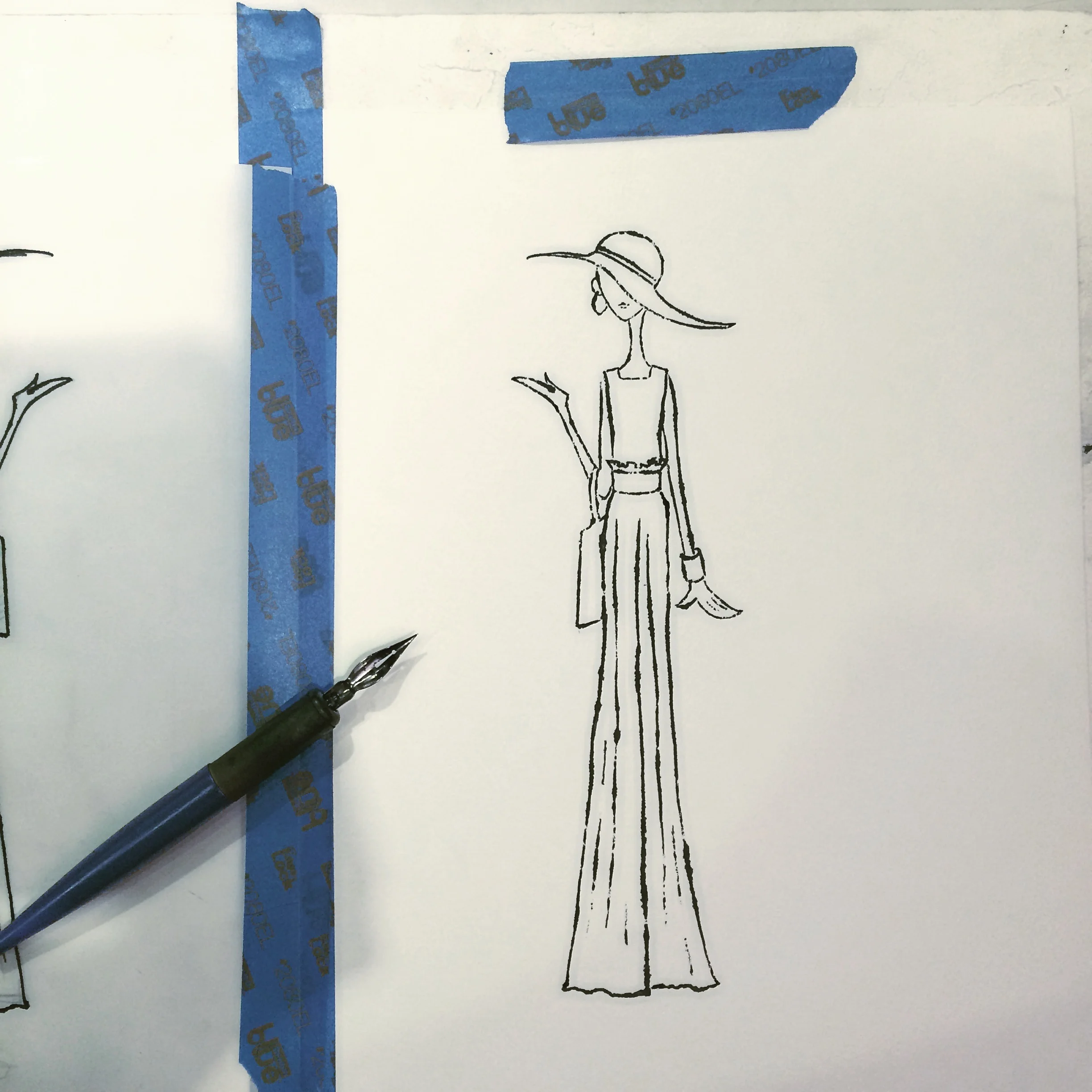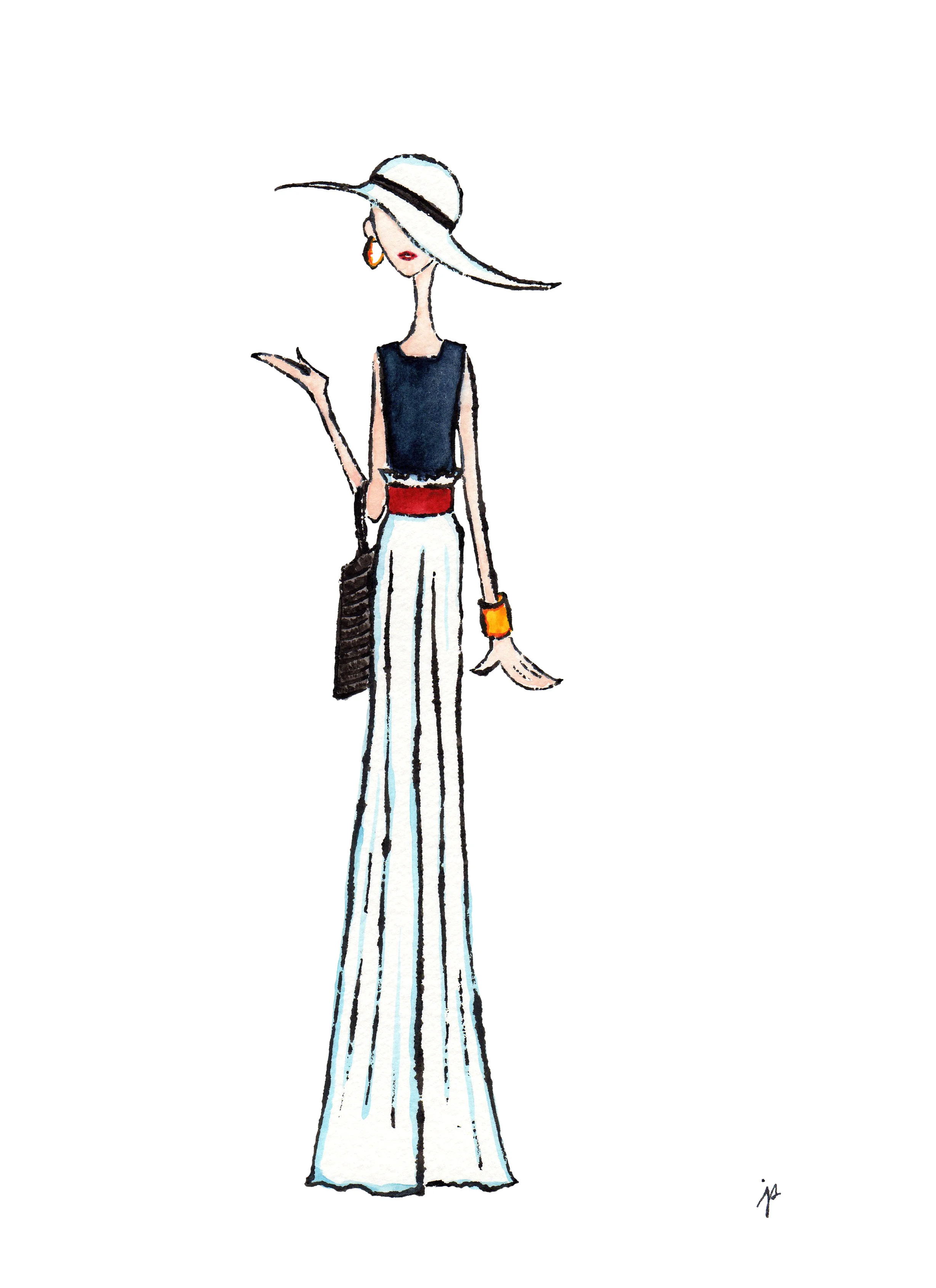I've posted and even did a PechaKucha presentation about how I create my blotted line drawings (jodisam.com/blog/2014/04/07/blotted-line-drawing-aries/ and jodisam.com/blog/pechakucha-from-daydreams-to-ink-and-pixels/). Thought that it would be interesting to share with you some of the supplies I use for my works, cause am a rather particular & habitual person and insist on using certain items. The following are an essential part of my so-called "art kit".
Every year when I visit home, I always bring back a couple of things with me. The first is Clearprint's Design Vellum that is made of 100% cotton fiber. I know that there are many types of tracing paper available here in Japan, but this is the only one I have used for my blotted line creations. I find Clearprint's Design Vellum clear and thick enough for tracing and blotting, especially because it is made of cotton fiber. Just love natural materials.
The second is tape--low tack masking tape, or painter's tape. I used 3M Scotch-Blue Painter's Tape for Delicate Surfaces for a number of years until this February when I discovered Frogtape Delicate Surface Painter's Tape! It was only when my art supply store ran out of the 3M one I went to Home Depot store to buy it, and when I was speaking with a staff there that he recommended Frogtape to me. I must use low tack tape to secure my tracing/blotting paper and watercolour paper to a board in order for me to blot my illustrations with ease and be able to completely remove the tape after the blotting is finished and inked dried. Even with the most low tack tape, the watercolour paper can still sometimes rip when the tape is being removed. But I have to say that with Frogtape, such damages happen less.
For pen nibs, I mainly use Speedball Hunt Globe Bowl Pointed 513EF (for regular lines) and Zebra Mapping No. 2586 (for fine lines). I have a number of nibs, but somehow always reach for these two. For ink, it has to be Platinum Carbon Ink in Black. I swear by this waterproof, lightfast, pigment-based carbon ink! I get the darkest, waterproof lines from it, and one bottle lasts forever.
In terms of paper, I don't use top-of-the-line watercolour paper, though I would love to, simply because of the unpredictability of blotting. I don't know how many sheets of paper I have thrown out because of too much ink and other silly mistakes that comes with this method of illustrating. I like a true white, somewhat textured, grained paper, and of what is available in Japan, I choose to use Canson Montval Watercolour Paper that is cold pressed, 100% cellulose, and of good weight (300g). It does have its limitations where I cannot do too many washes with it, but considering the type of painting I do, it currently fits my needs best.
For watercolours, I just tube paints from a number of makers: Schmincke Horadam (my favourite, though most expensive), Maimeri MaimeriBlu, Winsor & Newton, Holbein, and so on. And lastly, I use traditional Japanese & Chinese brushes, not the typical western watercolour ones. They are of a bamboo body, with natural fiber hairs. This makes them light, and enables them to pick up and distribute colours beautifully. They help me bring my work to life. I think it's also because they were the first brushes I ever used when I was a child, and I never really gotten away from them......
Well, this is a pretty long and extensive list. I hope it gives you more insight into with what I create my illustrations with, since most of the work you see here are digital images of the actual paintings. Am old school--I love love love things that are tangible and have depth, texture, look & feel to them. Below is the finished painted that has been scanned and ready for my "tokyo trend" report for Jun 2016!



